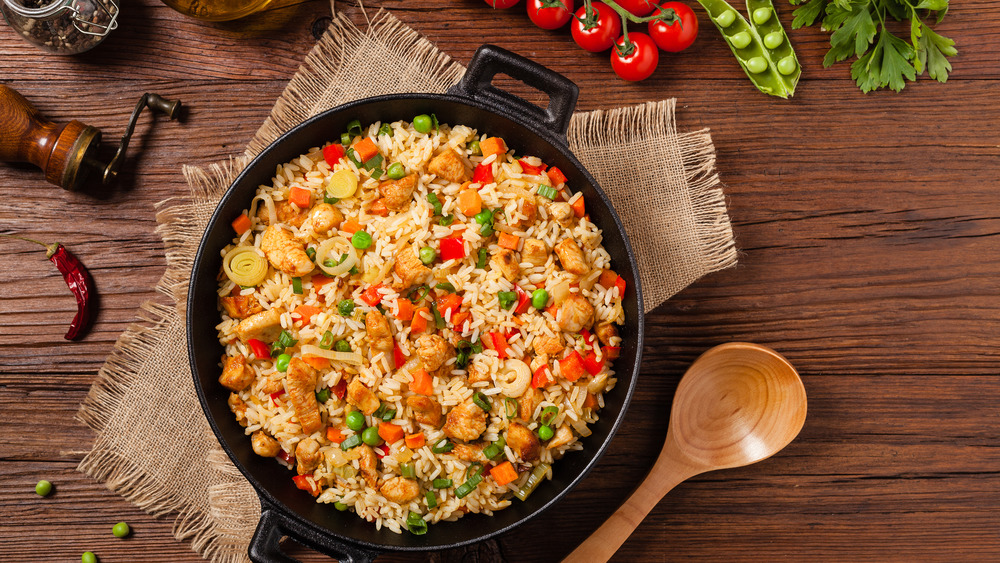This Is The Absolute Best Way To Reheat Fried Rice
Leftovers are great. Not only do most foods taste better the next day, but having leftovers in the fridge is a clear sign that you won't have to wonder what to make for breakfast, lunch, or dinner. Whether it is leftovers from a grand dinner or something much smaller, extra prepared food will always be clutch. But there has always been one caveat that has eluded even the biggest leftover aficionado — and that's the process of reheating the food.
From leftover pizza to second-day fried chicken, there is a fine line between achieving perfection and getting something that is soggy or cold. But what about rice dishes? How is one to achieve reheating something like fried rice perfectly on the first go? Well, Bon Appetit cites that the perfect technique to employ when reheating fried rice is to set it in the microwave (on medium power) and to stir it about once or twice (dealer's choice) at 20-second intervals. And it seems like the USDA would agree with this tactic. Stirring the rice periodically could help avoid any cold spots within the rice as it reheats.
Keep your leftover fried rice from drying out
However, the tricky part about reheating leftover fried rice is making sure it doesn't dry out. According to Foodsguy, you first want to be sure to store your fried rice in an airtight container and only reheat it once before enjoying it. Next, they recommend adding a liquid, like water, oil, or broth to reintroduce some much-needed moisture back into your dish. For microwaving your fried rice, Foodsguy says adding two tablespoons of water (or broth) to the fried rice before heating can make all the difference. However, if you're trying to warm your fried rice on the stovetop, you should add oil to the pan and give it time to warm up before adding the rice on medium heat for about 10 minutes.
Leftovers are part of a time-tested tradition. According to NPR, leftovers were born out of necessity sometime during World War I when Americans began hearing of the food scarcity caused by the war. By the time the Great Depression rolled around, keeping leftovers became a needed practice for general survival. Historian Helen Zoe Veit told the outlet that, like everything in life, leftovers are experiencing another renaissance of sorts as the current perception of leftovers is quite positive. Veit tells NPR that Americans are now unwilling to dispose of edible food (at an increasing rate). That's good news for your just-as-tasty leftover fried rice.

